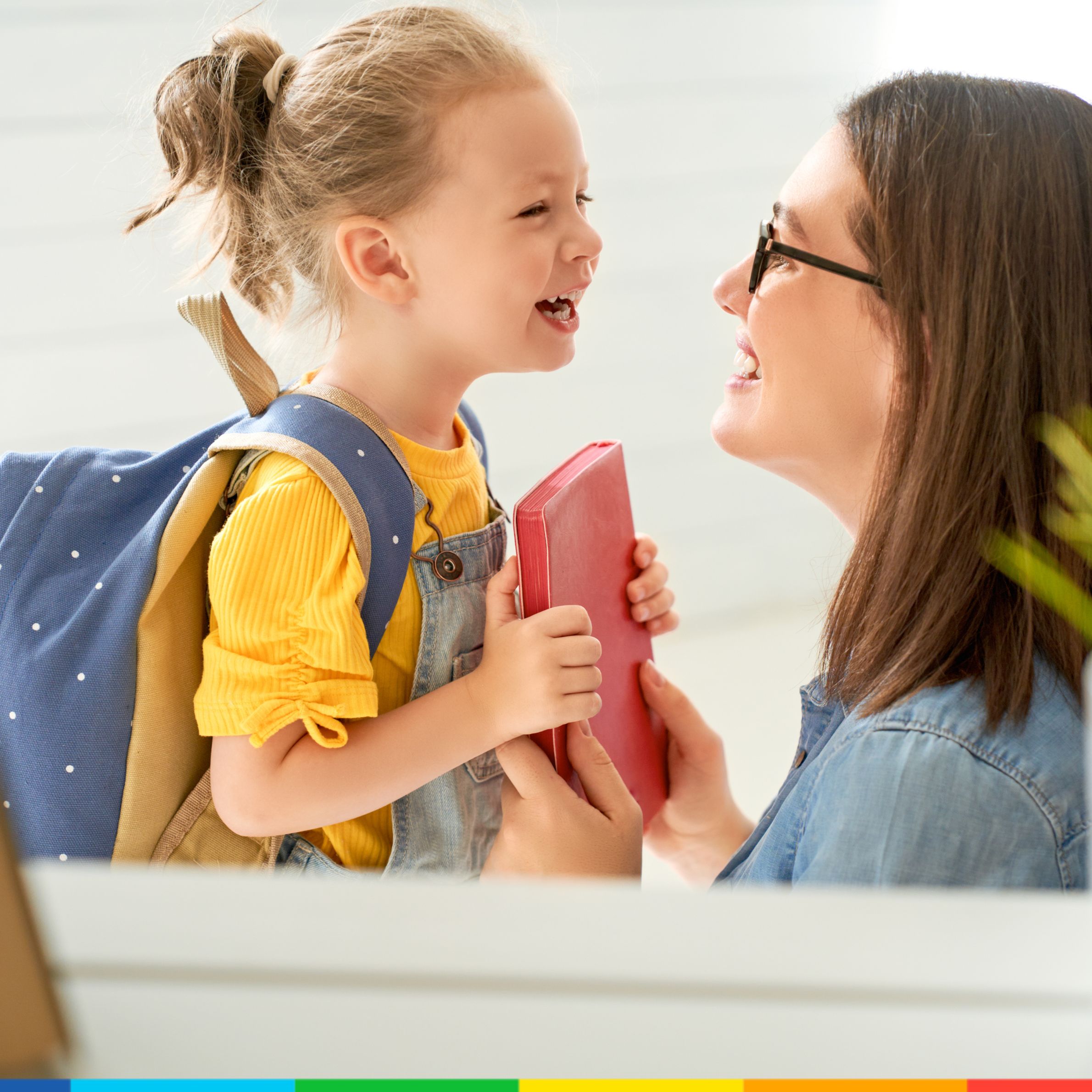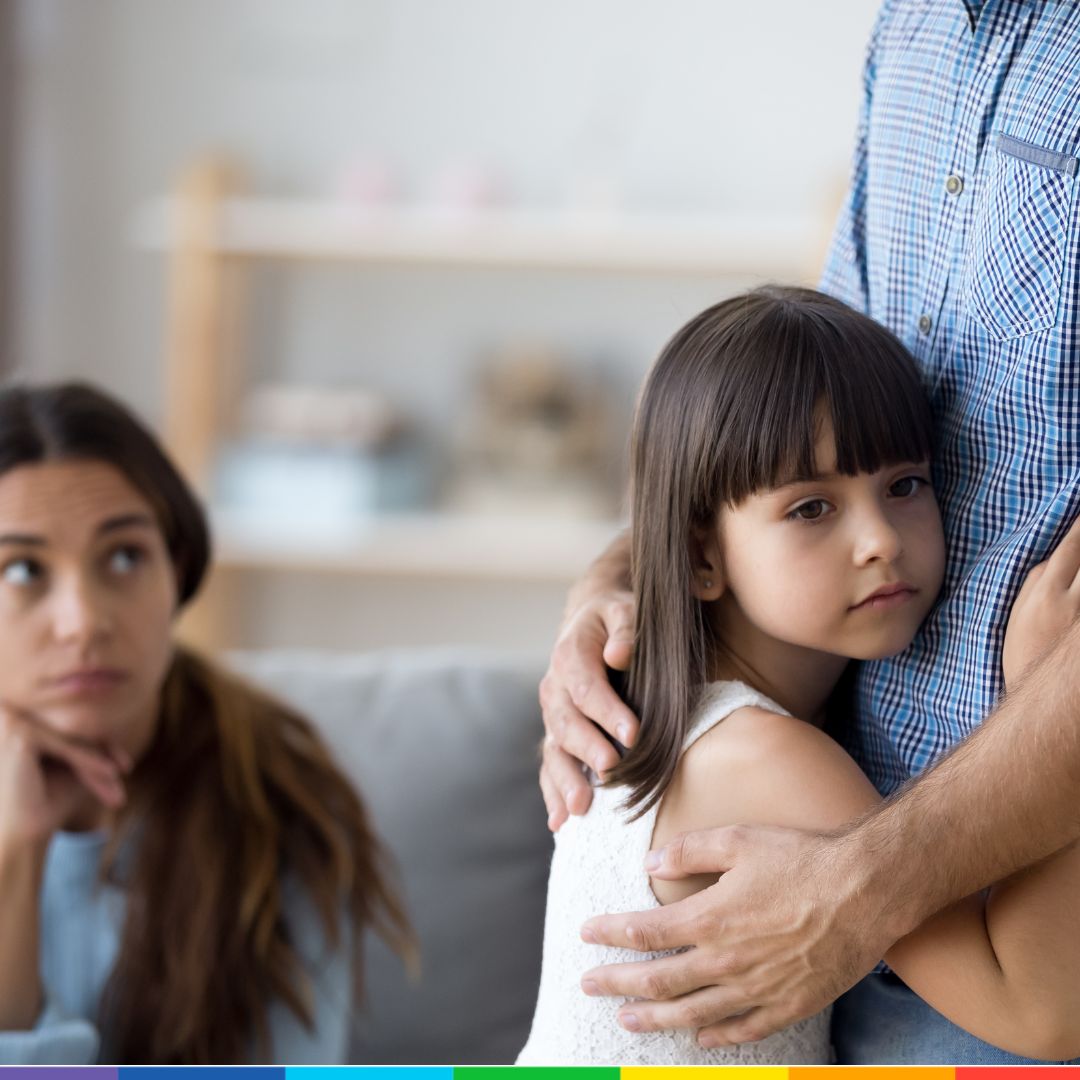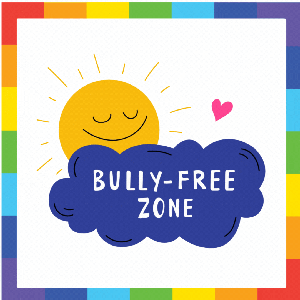
Parenting Tips
Bullying – How to Protect Children and Handle the Behavior?
June 4, 2024
Related
Topics

Hey
-

Back to School: How to Prepare for a Smooth First Day?
September 1, 2025
-

How to Build Resilience in Children? – Never Give Up!
August 8, 2025
-

Parents Saying ‘No’ – How to Set Limits Without Guilt?
July 15, 2025
-

-

Green Parenting: How to Make Your Home More Eco-Friendly?
April 24, 2025
Ready for more?
Hey
Sign up for Rainbow Kiddies newsletters for more stories and updates
Bullying is a topic that is vast and difficult to understand, identify and handle. The best we can do is guide our kids right so they do not indulge in such behavior, or rather prevent it so that it never happens. We will not be able to see this happen unless this approach is adopted in every household and school.
Further, the kids who get impacted might not know how to respond, or face it, whom to go for help, etc. So we have to make our kids feel that we have their back, no matter what. Be it bullying, racism or any other evil behavior, we have to create an open atmosphere at home which will help our child to confide in us about all their feelings and worries. Hope this article guides you in accomplishing all of this to at least some extent.
Again a lot more awareness, reading and knowledge sharing needs to happen on such topics so we can help ourselves and our kids in such situations. And, yes we caregivers, parents and teachers can make a big difference when it comes to such issues.
“Bullying is not normal behavior or just part of growing up – so take it seriously!” ~Australian Institute of Family Studies
Read On to Know More About Bullying
- Understanding Bullying
- Recognizing Signs of Being Bullied
- Why do some Kids Indulge in Bullying Behavior?
- How do you know if your Child is Bullying?
- How to Preventing Bullying?
- Responding to Bullying
- How to Create a Supportive Environment?
- Resources for Parents and Caregivers
- Conclusion
1. Understanding Bullying
- Definition: Bullying is repeated aggressive behavior intended to hurt another person, physically or mentally. Understand that it is a behavior and not one’s identity. Please take care not to label any child as a bully. Since it is a behavior, it can be unlearned and replaced with an appropriate helpful behavior. Also it does not include random aggressive acts, nasty behavior, personal disagreements or rough play (fighting for fun which is something kids might enjoy).
- Types:
- Physical: Hitting, kicking, shoving, or other physical aggression, stealing someone’s belongings, get someone into trouble purposely.
- Verbal: Teasing, name-calling, or threats, inappropriate sexual comments.
- Social: Damaging friendships or impacting acceptance in social groups by spreading rumors, or by excluding from groups.
- Cyberbullying: Online harassment using electronic means like social media, texts, video game systems, phone calls, or emails.
2. Recognizing Signs of Being Bullied
- Physical Signs: Unexplained injuries, damaged belongings, lost money or belongings. They might also ask to replace money or lost belongings.
- Emotional Signs: Anxiety, depression, intense feelings and sudden mood changes – mostly scared, ashamed, sad, angry, guilty. Low self-esteem could be another one. Suicidal thoughts could be another sign in some extreme cases. Kids might even try to avoid going to school by making up reasons like illness due to excessive fear. They might also feel helpless and be worried about speaking up.
- Behavioral Signs: Avoidance of social situations, decline in academic performance, changes in eating/sleeping habits, losing friends or being secluded, aggressive with siblings or other family members, substance abuse, trying to stay around family or adults, having nightmares or bedwetting are some of the behavioral signs. If subjected to cyber bullying they might also tend to go more secretive.
These might not necessarily mean that they are being bullied, but that could be a reason. Talk to the child openly to understand the root cause of the issues they might be facing. If you are unable to help much, take them to a counselor or psychologist who might be able to help them right.
3. Why do some Kids Indulge in Bullying Behavior?
- Values: Enjoy violence or violent behavior, believe it is not wrong; into breaking rules/ laws.
- Conditioning: Dealt with aggression at home, or school; unable to empathize with others. They might find pleasure in damaging or stealing someone else’s belongings. Some might be even into substance abuse. As per UNICEF, they might be stronger physically, larger, have a higher social status or more power/ popularity.
- Nature: Dominating personality, short-tempered, know how to get away with the behavior.
4. How do you know if your Child is Bullying?
- Physical Signs: A teacher, child or fellow parent will at some point inform you about it. They might be having more money than you gave or more belongings that you never knew of.
- Emotional Signs: They will be low on empathy and have a tough time understanding or expressing their own feelings. They might respond rudely when questioned about their behavior. They might be impulsive.
- Behavioral Signs: They might seem obsessed about taking revenge, refrain from taking responsibility for their actions and might even blame it on others. They might be unable to play well with other children – easily angry, too loud on winning and often getting into fights. They might also seem like a hazard around younger kids and siblings, might be hanging out with aggressive children or might even enjoy insulting others.
5. How to Preventing Bullying?
At Home
Open Communication:
Encourage your child to talk about their day and feelings. Meanwhile, create awareness about bullying behavior in them, help them understand that it is not good to indulge in, and will need to be changed. Some children might be doing it for fun. Even in such cases they need to know that it will not be tolerated, and is not actually fun. They have to be made to understand that the kid at the receiving end might be getting impacted in a really bad way.
On the other hand, if they are being bullied, help them understand that it is not due to any fault in them – there is no need for them to feel ashamed of themselves or how they are. Also make them aware that the one who is bullying is the one at fault and needs to change their behavior.
Teach Empathy:
Help children understand the impact of their actions on others. When your just misbehaves, ask them how they might feel if someone did or said something similar to them. Ask in a nice way such that they will not feel offended and indeed realize their mistake. For instance, if your child has been hitting others, ask him or her, “Were you angry with your friend today? Why did you hit that child? Wouldn’t it have been so much better if you both sat and spoke about it? How would that child have felt when he or she was hit? Would you like being treated like that?”, and so on.
Model Behavior:
Show kindness and respect in your interactions because children learn by observing. Your child could even gather their other friends to save friends who get bullied. Read our story on how friends help each other out by being assertive and handle bullying. Bullying might triumph against a child who has no support group, but if they stand up for each other, it will not work. Also, there is a good chance that the bullying person will not try to bother them again because he or she knows that they will not succeed.
Set Boundaries:
Establish clear rules about acceptable behavior and consequences for bullying. Physical punishment will only make them feel that bullying is okay. In fact, you are conditioning them to accept bullying if you resort to physical aggression. Instead, take actions that will make them realize that their behavior was not appropriate. For instance, if you see them snatching toys from another kid, ask them to share or take turns. Cancel all playdates until the child agrees to behave, but if the child takes too long, schedule something to check for changes. You may give rewards when the child shows a positive change. This will encourage the child to replace bullying behavior with something positive.
At School
Maintain regular communication with teachers to stay informed about your child’s social interactions. In case the teacher mentions about bad behavior at school, take the opportunity to discuss any recent or earlier family issues which might have impacted the child. If your child complains to you about constant bullying and ask you to step in, do so and talk to their teacher.
Involve School Counselors:
Utilize school resources like counselors and anti-bullying programs. Again, talk openly about any family issues so that the counselors will be able to help. Also get the child evaluated by a counselor or psychologist to ensure that it is only a behavioral issue. In some cases kids with disabilities who do not have properly developed social skills might indulge in such behavior, but then it cannot be called bullying behavior. This might need different kind of support and care.
Educate on Diversity:
Encourage schools to have programs that teach respect for diversity and inclusion. Encourage your child as well. Read our recent article about how to create awareness about racism and similar issues in children and thus create a safer environment for them.
Online
Monitor Online Activity:
Keep track of your child’s online interactions and set limits on screen time. Read our article on screen time to understand how to control and check your kids’ screen time. The child could be encouraged to spend time doing alternate activities which give positive vibes like spending time with the family, good friends, siblings, pets, etc. Such distractions will help them calm down and feel better. If children indulge in cyberbullying it will get classified as illegal behavior and the parents might also have to face legal action for letting it happen.
Teach Digital Etiquette:
Educate your child about respectful online behavior and the importance of privacy. If they are being bullied tell them not to respond to such behavior. Though it might feel frustrating, this is the best way to drive the bullying person away, since lack of reaction will make them loose interest.
Report Abuse:
Know how to report cyberbullying on different platforms and encourage your child to do the same. Ask them to take a screenshot of the threatening or sexually abusive message and report to you quickly. This article on Bully-Free by Children’s Society has many guidelines that will help to block or avoid bullying. They could also block the bullying person. One of the best options is to ask kids to keep their accounts private so they need to interact only with the people they really know and want to interact with.
6. Responding to Bullying
If Your Child is Being Bullied
Listen and Support:
Provide a safe space for your child to express their feelings. Validate their feelings and hear them out before you respond. You could also get them to write about it soon after it happens, so you can just read about it, instead of having them to repeat the details over and over again.
Reassure:
Affirm that it’s not their fault and they are not alone. Help them feel good about themself. If they were teased while being bullied or insulted, assure them that it is not true, and that they are good.
Develop a Plan:
Work with school officials to create a strategy to address the bullying.
Build Confidence:
Encourage involvement in activities that build self-esteem and friendships. They could also spend time with adults or peers that they feel safe around. Also, help the child to practice speaking in clear, confident and firm voice while confronting bullying behavior. Teach them to look the person in the eye so they come across as confident. You can do role-plays to practice all of this.
Also teach techniques like broken record technique or teach them to say “No”. We have a few more techniques explained in our post on nurturing assertiveness in children, that will not just help them encounter bullying, but be assertive in general. Bullies generally expect a reaction, so these techniques might help the child stay calm, disinterested and help get rid of the person indulging in bullying.
Help your child read our book on how to kids can respond to bullying in prepared and unprepared situations. You can also read with them our other book on how to confront bullying while your parents are around. If the child happens to feel too anxious or unable to act when in such a situation, enact appropriate responses with them at home. You could also write the safety plan for them in their phone, a pocket card or somewhere, so they can rush to some safe adult, peer or environments at such times.
If Your Child is Bullying Others
Open Communication:
Again, talk to them openly, validate their feelings and hear them out before you respond. Try to understand the repetitive nature to ascertain if it is actually bullying. Check when it began, which child/ren are being targeted, what triggers the behavior, which place (playground, classroom, cafeteria) or time (recess or after school) the child chooses to behave like that, etc.
Address the Behavior:
Make it clear that bullying is unacceptable and has consequences. Offer non-violent consequences like the ones we mentioned earlier. Also make it clear that the behavior has to stop.
Understand the Root Cause:
Try to understand why your child is bullying and address underlying issues such as stress, peer/ exam pressure, or a need for control. Check if anyone at home is being aggressive with the child. Examine your own behavior – have you been there for your child at all times? Work on yourself or other family members if there is a need. Try to understand their feelings leading to the behavior, or if they have been bullied themselves at some point.
Teach Responsibility:
Encourage your child to apologize and make amends for their actions.
Teach Empathy:
Be a role model and teach them empathy. When in a situation ask them to imagine how they would have felt in a similar situation. Be kind and encourage kindness. You may also talk about your own feelings to them, so they will confident in trusting and confiding in you. Ask them very kindly about what happened, what they did, what the other kid did, how the other kid might have felt, how they would respond if someone did that to them, etc.
Provide Positive Reinforcement:
Reinforce positive behavior and teach problem-solving and conflict-resolution skills. Also be empathetic and encourage them to follow. Never forget to reward good behavior – it could be just a hug, kiss or something else that they might like. It will definitely reinforce positive behavior.
Take Action:
Do not brush it off as something that will change on its own. Some other child might be getting badly impacted. So collaborate with the teachers and get to know the school policy on bullying. Understand how you can help. If nothing seems to be helping approach an counselor or psychologist and help your child change the behavior. Most importantly do not blame someone else for your child’s behavior, do not justify the behavior, and do not encourage bullying ever.
7. How to Create a Supportive Environment?

- Foster Open Dialogue: Regularly discuss feelings, friendships, and school experiences. Make sure to keep you reactions under check while listening to them. Focus on getting the facts right. Try to understand and validate their feelings. This is not just with your child – if a fellow parent, child or teacher talks to you about you child indulging in bullying or being a victim, hear them out, get the facts, try to help and support.
- Encourage Inclusivity: Promote inclusive activities and friendships. Check usage of negative words and statements against other groups or communities. Model inclusivity.
- Build Resilience: Teach coping strategies to handle difficult situations. Doing role plays, teaching breathing techniques and assertiveness can all help in this process. Try to keep the family stress-free and conflict-free. This is something that can really help the children.
- Stay Involved: Be active in your child’s school life and social circles. Spend quality time with them, read to them or play with them for a while every day. Enjoy looking through their social media together to stay involved. Appreciate their effort and hard work. Know that all children are not the same. If your child is not good at studies, they might be good in some other area like sports, arts or theatre. Encourage them to do more of what they enjoy and appreciate every little effort they put into the other areas. Ask the teachers to involve them in activities at school to redirect their excess energy.
8. Resources for Parents and Caregivers
- Books and Guides: Access literature on bullying prevention and intervention. You might also jot down all your facts as and when you have them, and be prepared for the conversation with your child. Have a look at our reference links to read more on this topic.
- Support Groups: Join parent support groups to share experiences and strategies.
- Professional Help: When you feel the need, don’t hesitate to seek help from child psychologists or counselors.
Conclusion
This guide helps parents and caregivers protect children from bullying and manage bullying behavior. Bullying includes physical, verbal, social, and cyber forms, with signs such as unexplained injuries, anxiety, and changes in behavior. Preventive measures include fostering open communication, teaching empathy, setting clear boundaries, and monitoring online activity. If a child is bullied, provide support, reassure them, and develop a plan with school officials.
For children who bully, address the behavior, understand underlying causes, teach responsibility, and reinforce positive actions. Creating a supportive environment through open dialogue, inclusivity, and resilience-building is essential. Utilize resources like books, support groups, and professional help when needed. Effective bullying prevention requires a proactive and informed approach. Help them know that you have their back, no matter what.
Happy parenting!
References
A Young Person’s Guide to Handle Bullying | SingHealth
Responding to Bullying | Singapore Children’s Society Bully-Free Programme
Helping your child stop bullying: A guide for parents | Australian Institute of Family Studies
Bullying Prevention | National Association of School Psychologists
How parents, teachers, and kids can take action to prevent bullying | American Psychological Association
Bullying: What is it and how to stop it | UNICEF Parenting
Bullying: It’s Not OK | American Academy of Pediatrics
How to Prevent Bullying | stopbullying.gov
Want Rainbow Kiddies' updates sent straight to your inbox? And also get a surprise welcome gift!




